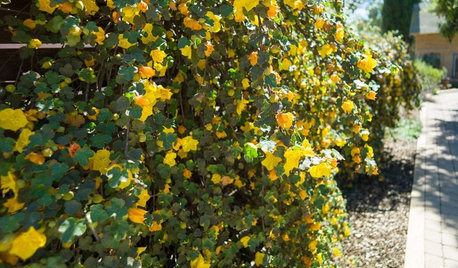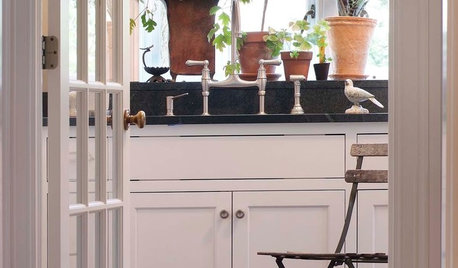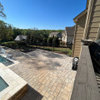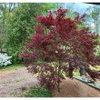HELP!!! How do i prune this???
linus08
16 years ago
Related Stories

GARDENING GUIDESTidy Up Sprawling Native Shrubs With These Pruning Tips
Sound horticultural pruning methods work for native and nonnative plants alike
Full Story
GARDENING GUIDESGot Frost-Damaged Plants? How It Happens, and When and How to Prune
Crispy brown leaves are a sure sign that Jack Frost has been to your neighborhood
Full Story
WINTER GARDENINGPruning Secrets for Exquisite Roses
Encourage gorgeous blooms year after year with this time-tested advice on how to prune your rosebush in winter for health and shape
Full Story
GARDENING GUIDESHow to Prune Your Flowering Shrubs for the Best Blooms
Less is often more when it comes to properly pruning flowering shrubs. Here’s what to do and why
Full Story
LANDSCAPE DESIGNNative Plants Help You Find Your Garden Style
Imagine the garden of your dreams designed with plants indigenous to your region
Full Story
HEALTHY HOMEDecorate With Intention: Let Your House Help You De-Stress
Break free of automatic TV time and learn how to really unwind and recharge with these easy ideas that don't cost a dime
Full Story
LIFEYou Said It: ‘Put It Back’ If It Won’t Help Your House, and More Wisdom
Highlights from the week include stopping clutter from getting past the door, fall planting ideas and a grandfather’s gift of love
Full Story
FARM YOUR YARDThe 8 Tools That Help Bring the Farm to Your Table
Vegetable gardeners get a big assist from these essential helpers
Full Story
WINTER GARDENINGHow to Help Your Trees Weather a Storm
Seeing trees safely through winter storms means choosing the right species, siting them carefully and paying attention during the tempests
Full StoryMore Discussions












duluthinbloomz4
linus08Original Author
Related Professionals
Citrus Heights Landscape Architects & Landscape Designers · Comstock Park Landscape Architects & Landscape Designers · Billerica Landscape Contractors · Bridgeport Landscape Contractors · Goodlettsville Landscape Contractors · Kettering Landscape Contractors · Lemoore Landscape Contractors · Longmont Landscape Contractors · East Norriton Landscape Contractors · York Decks, Patios & Outdoor Enclosures · Auburn Decks, Patios & Outdoor Enclosures · Dent Stone, Pavers & Concrete · Mount Pleasant Swimming Pool Builders · Redding Swimming Pool Builders · Weatherford Swimming Pool Builderskarinl
laceyvail 6A, WV
linus08Original Author
mjsee
karinl
duluthinbloomz4
linus08Original Author
lpinkmountain
ginny12
karinl
ally_ld
annieinaustin
ally_ld
mjsee
ally_ld
mjsee
ally_ld
karinl
ally_ld
ally_ld
oread
haringfan
mjsee